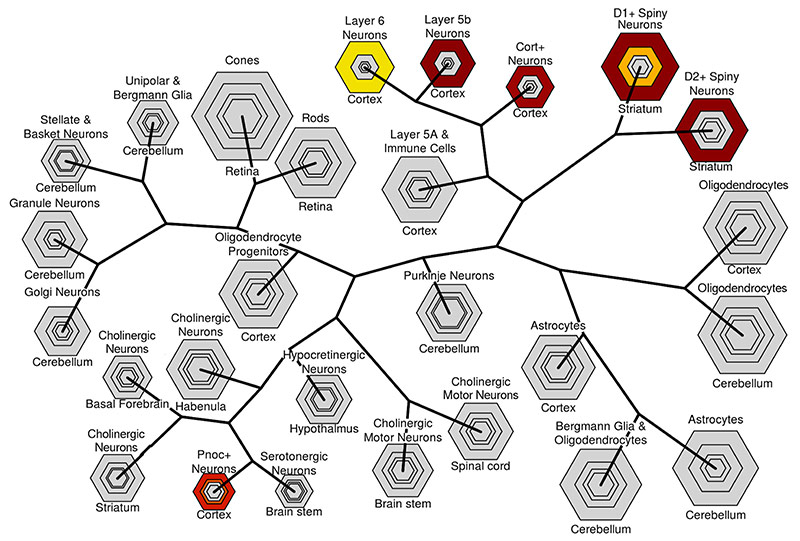
THIS ARTICLE IS MORE THAN FIVE YEARS OLD
This article is more than five years old. Autism research — and science in general — is constantly evolving, so older articles may contain information or theories that have been reevaluated since their original publication date.
By matching the genes expressed in particular cell types with those linked to a disorder, researchers may be able to identify the cell types implicated in the disorder, they report in a study published 22 January in the Journal of Neuroscience1. They use this method to link interneurons and immune cells to autism.
The brain contains a myriad of cell types, including neurons that boost or dampen brain activity, and support cells called glia. It’s often difficult to trace disorders such as autism to deficits in one particular cell type. However, studies have shown a strong connection between autism and cells that damp down brain activity, called interneurons.
The new method confirms this association, linking autism to a variety of interneurons in different brain regions.
The technique makes use of bacTRAP mouse lines, which carry a genetically encoded tag on cells’ protein-producing machinery. This allows researchers to catalog the proteins produced by a variety of cell types.
The researchers first calculated the statistical likelihood that a certain gene is expressed in only in one type of cell. Specialized cells such as rod cells, which are photoreceptor cells in the eye, tend to make many proteins that are unique to them. In contrast, neurons that project across the brain produce proteins that are also expressed in other cell types.
The researchers then examined which cells express genes linked to a particular disorder. They began by looking at genes associated with genetic blindness and found that, as expected, these are strongly expressed in rod cells.
The researchers next applied this technique to autism. They used a list of genes shown in a 2011 study to be abnormally expressed in postmortem brains from people with autism. These genes tend to be expressed in astrocytes, a type of glia, and in immune cells, such as microglia, the new study found.
The researchers also looked at genes listed in AutDB, a comprehensive database of autism-linked genes, which is licensed by the Simons Foundation, SFARI.org’s parent organization, as SFARI Gene. These genes are mostly expressed in interneurons in the cortex, interneurons that relay sensory and motor signals from the thalamus to the cerebral cortex and those that help regulate movement, called striatal medium spiny neurons.
Overall, the results suggest that a number of different types of brain cells may play a role in autism, the researchers say. Other researchers may access the bacTRAP expression data online to look at the cell specificity of their own list of candidate genes.
References:
1: Xu X. et al. J. Neurosci. 34, 1420-1431 (2014) PubMed
By joining the discussion, you agree to our privacy policy.